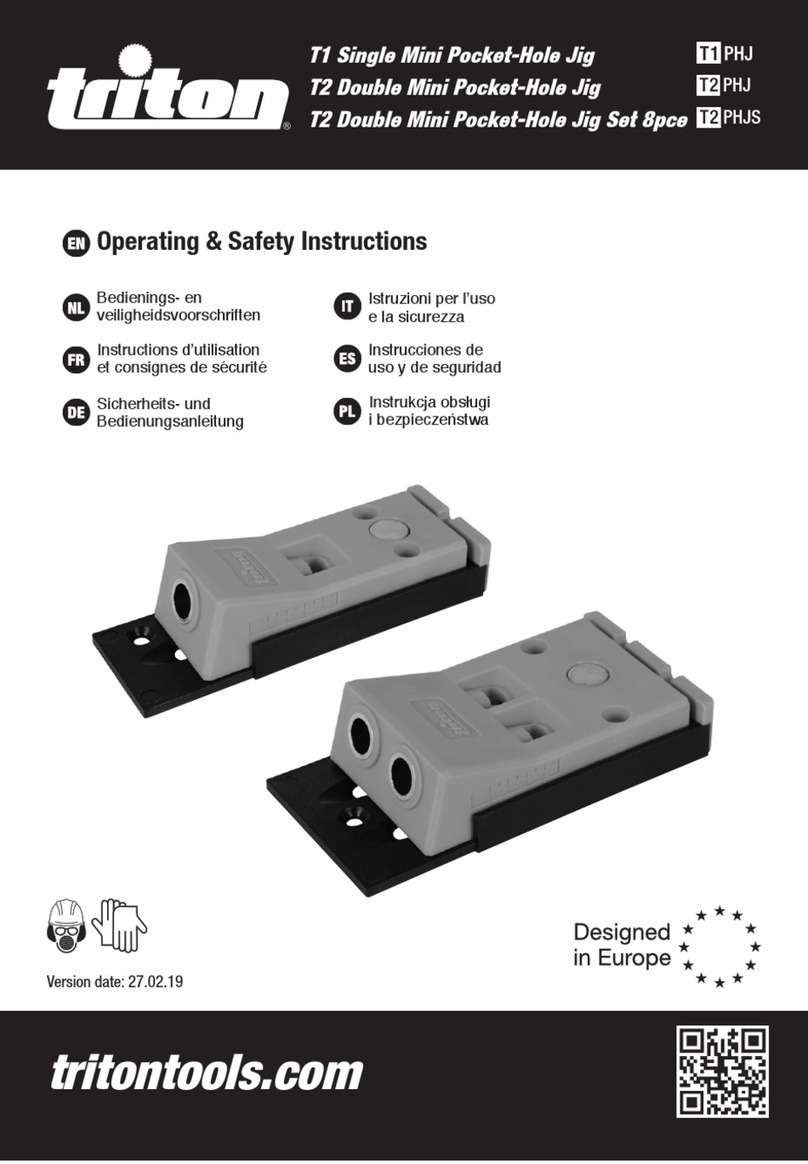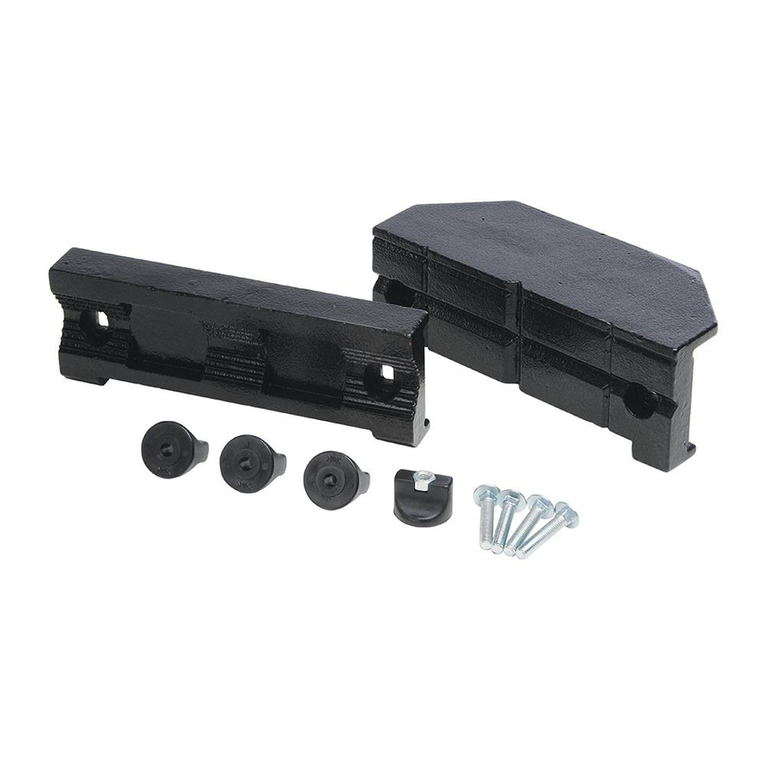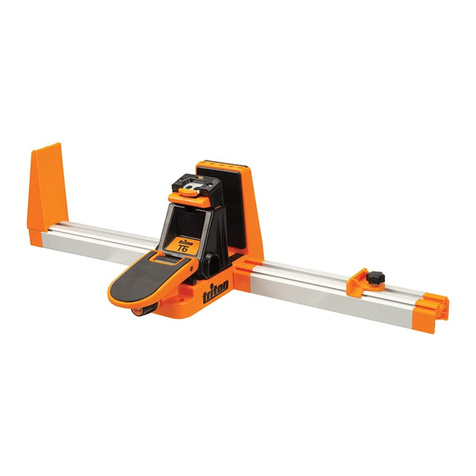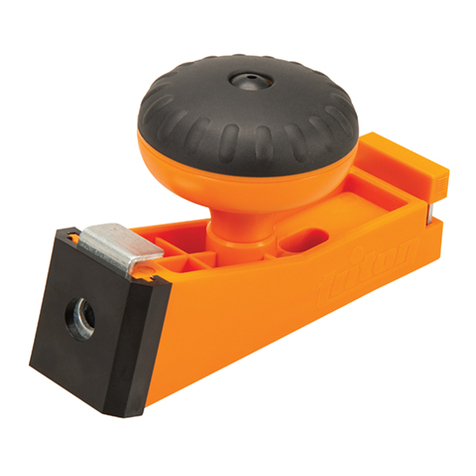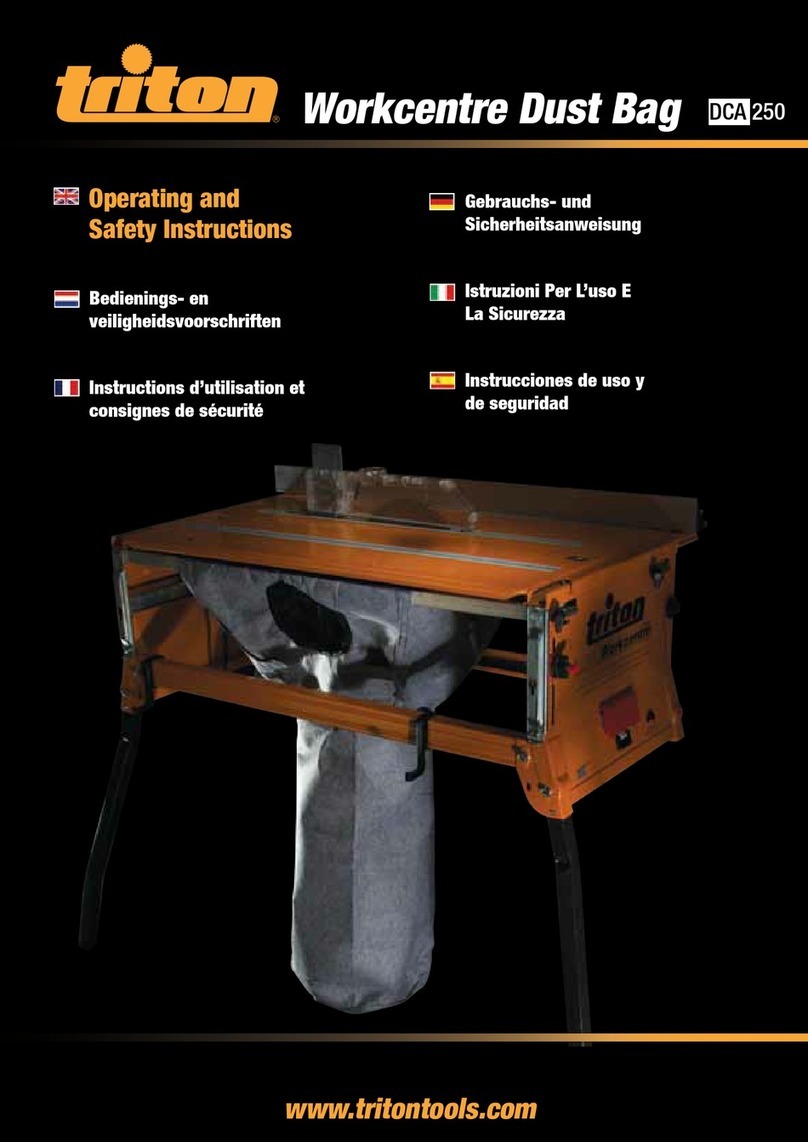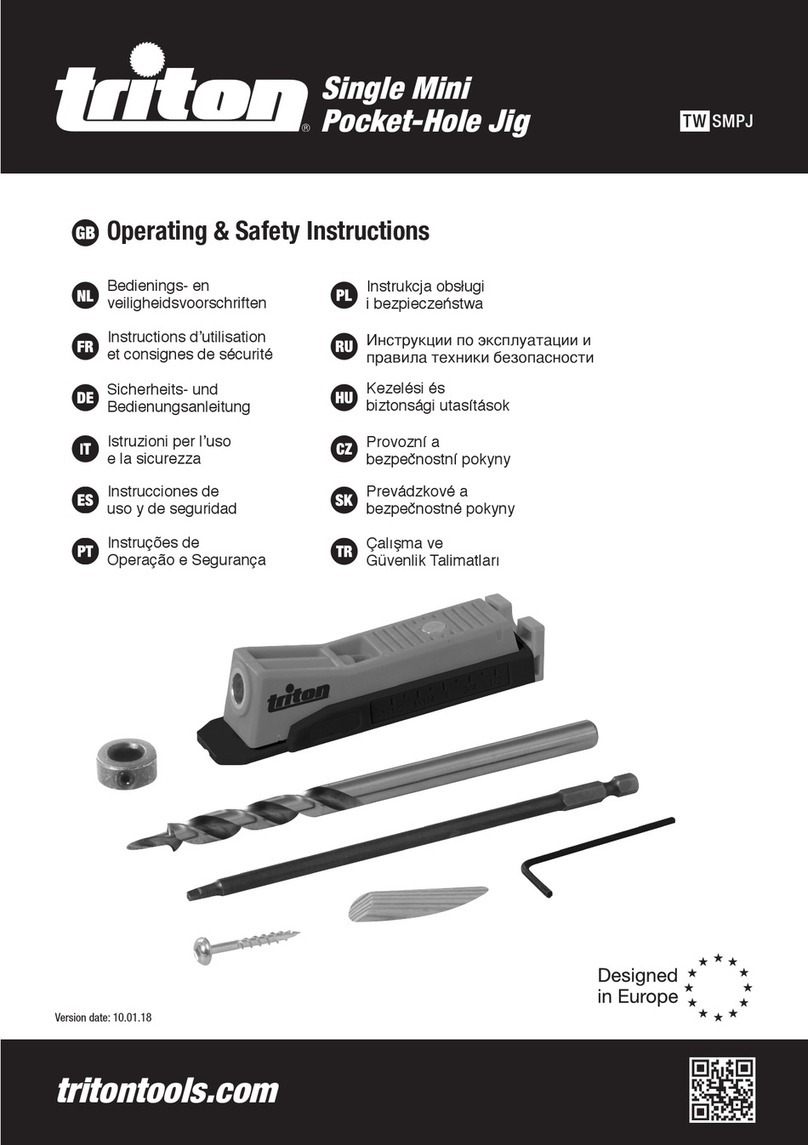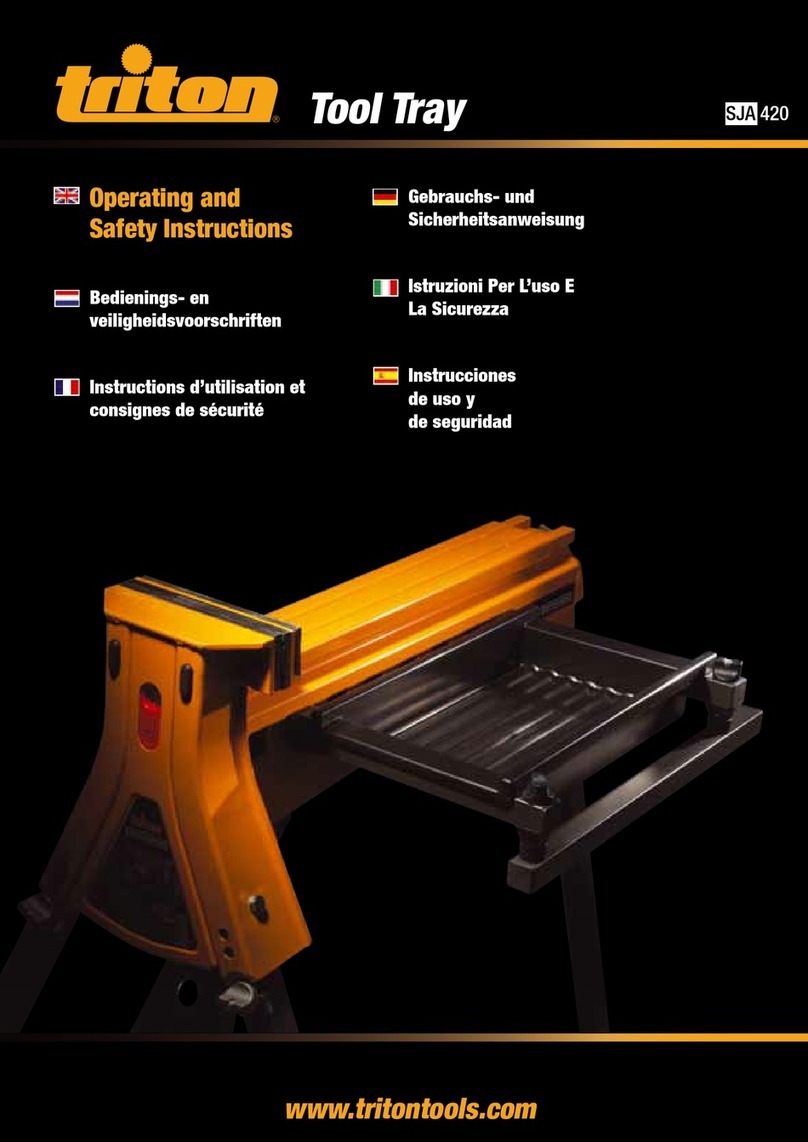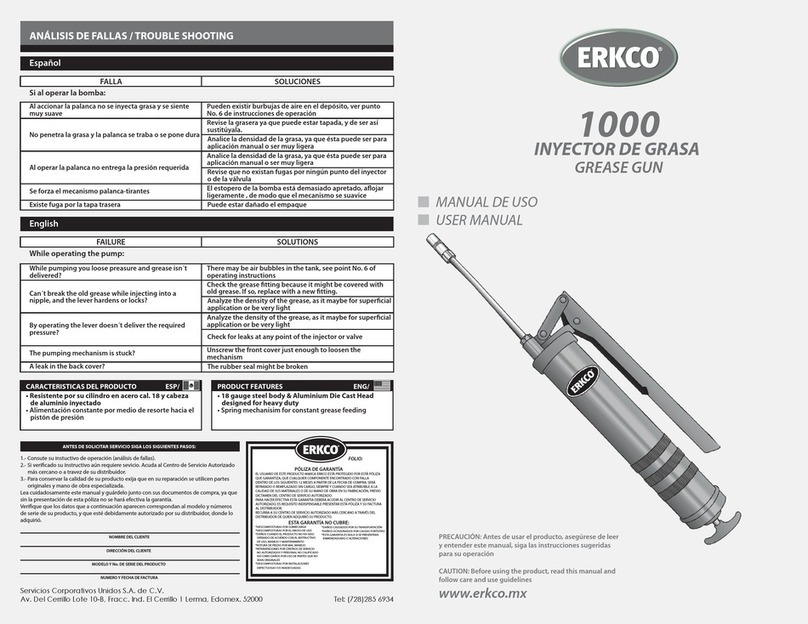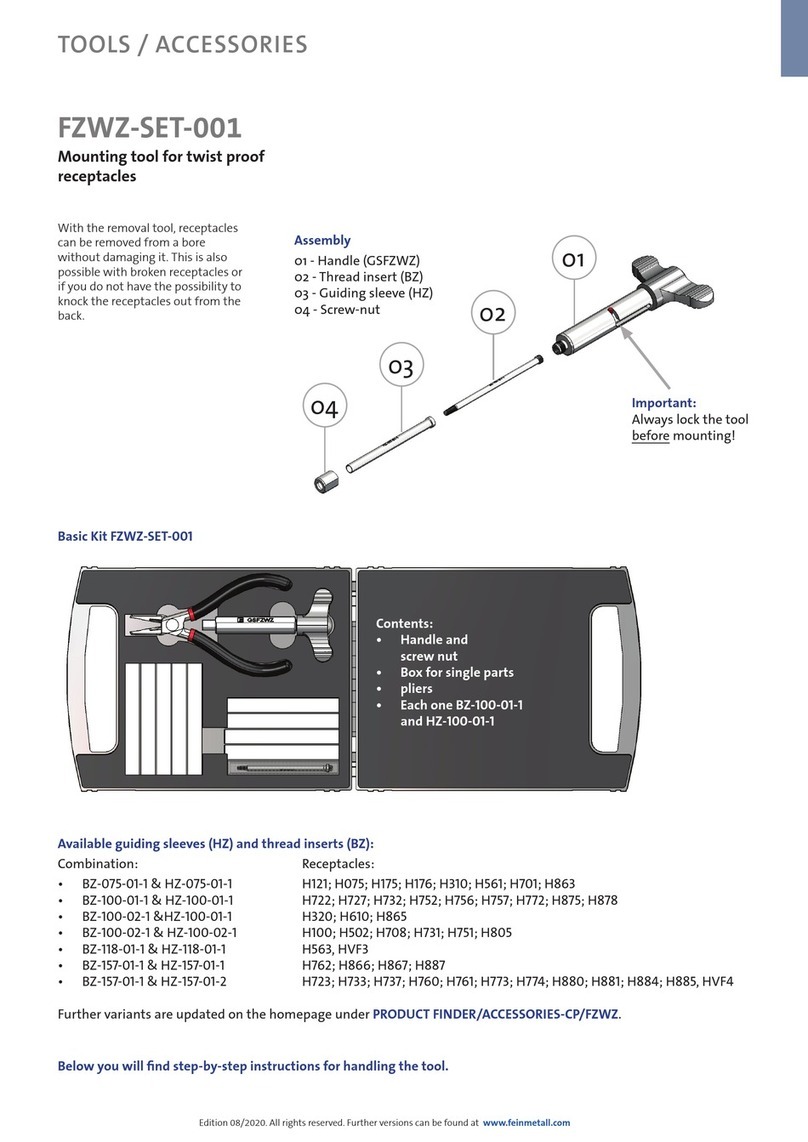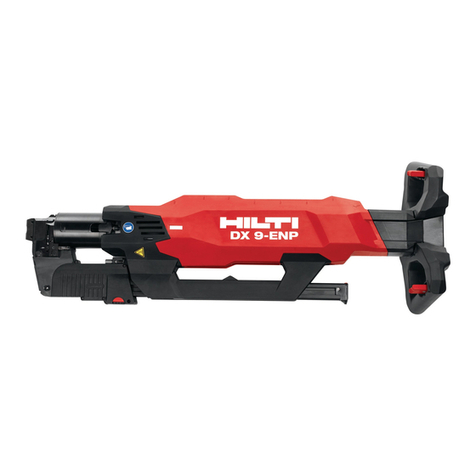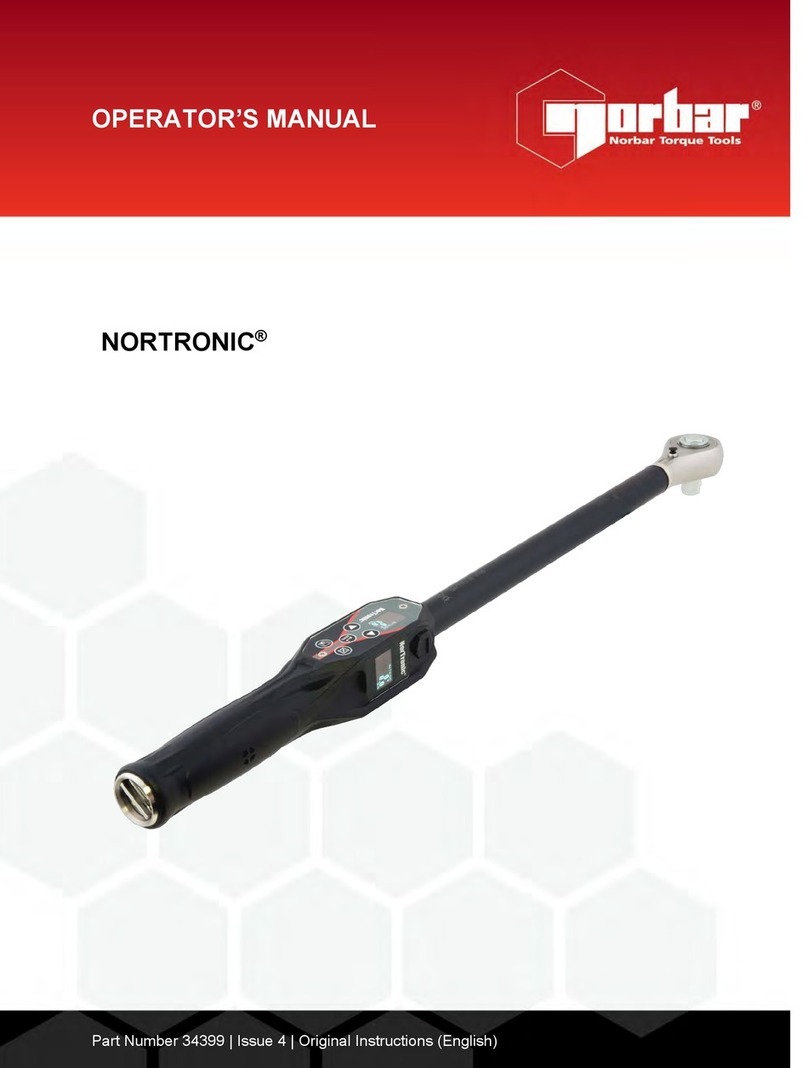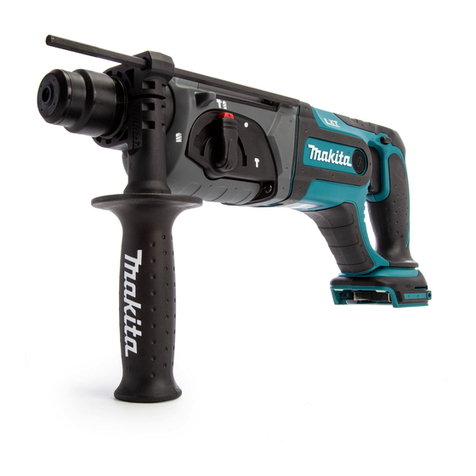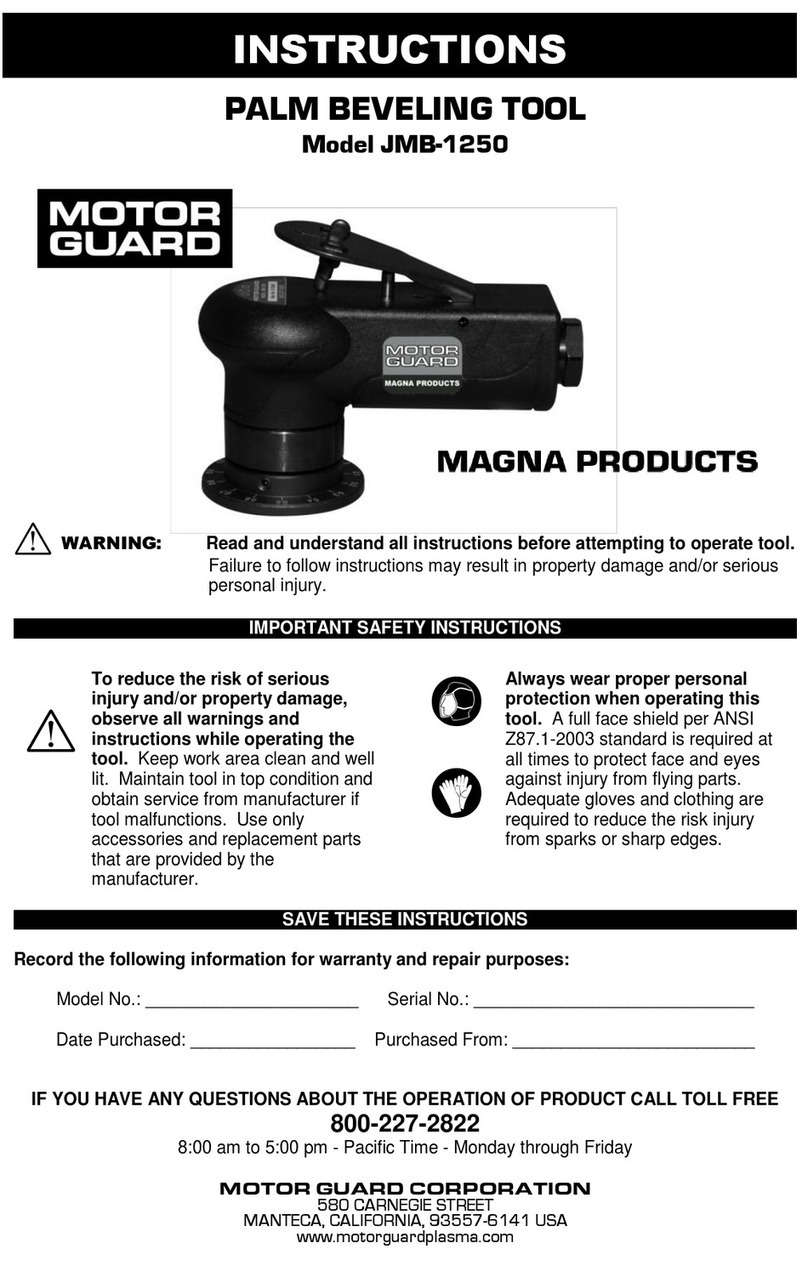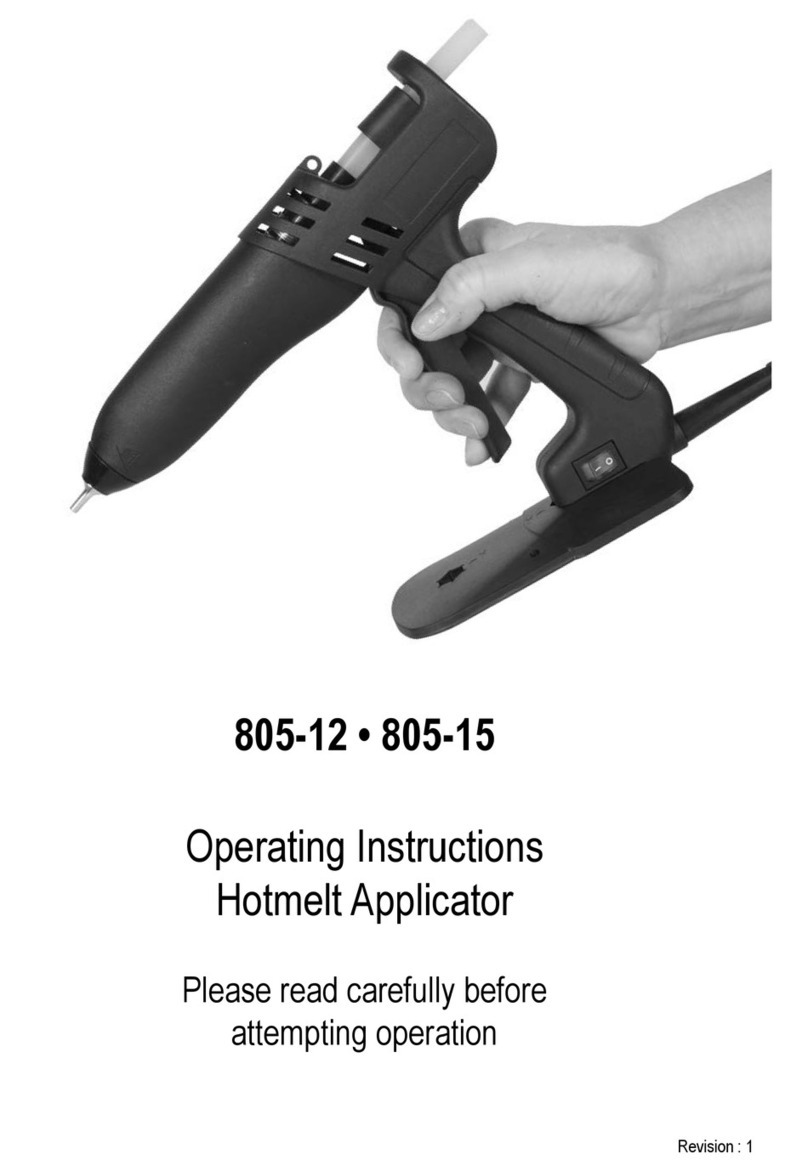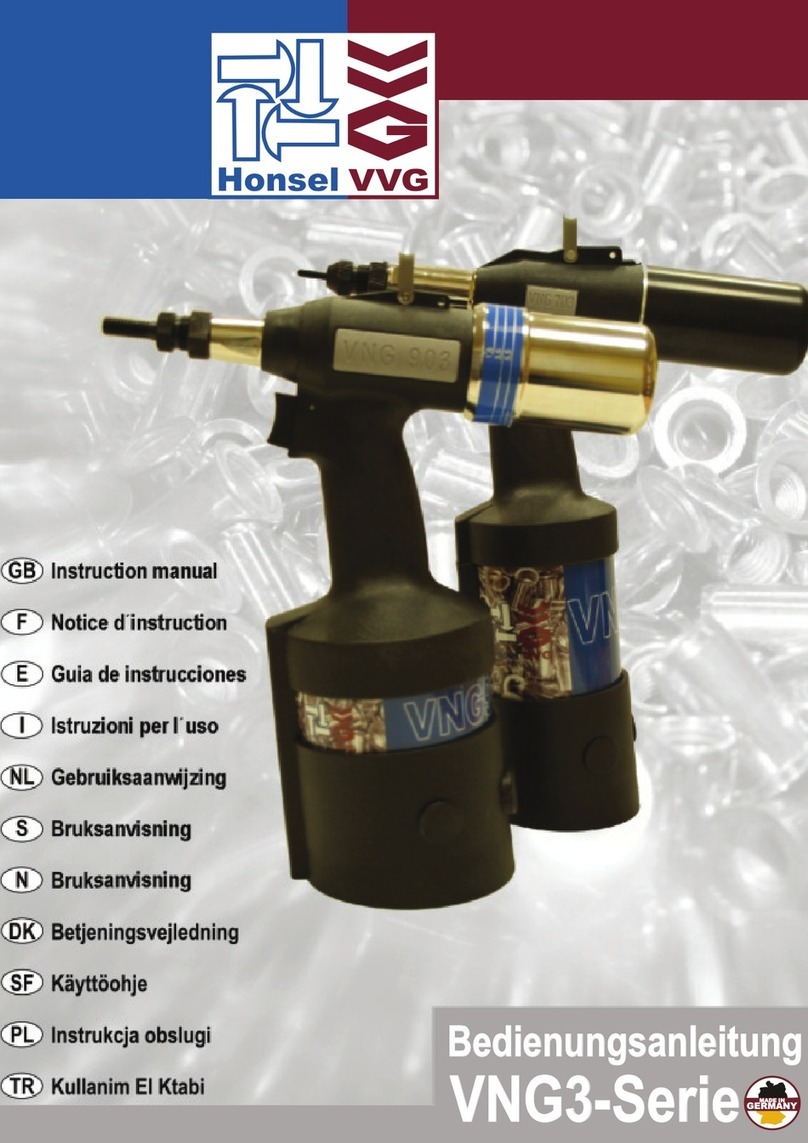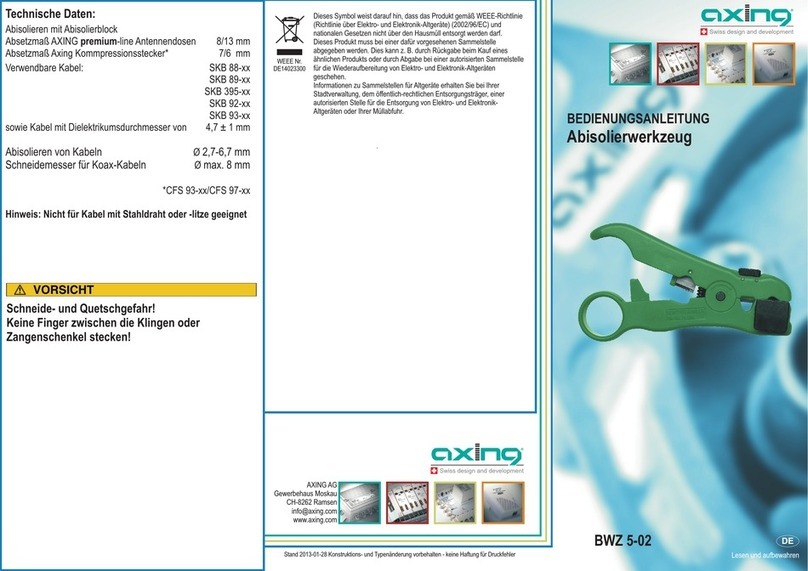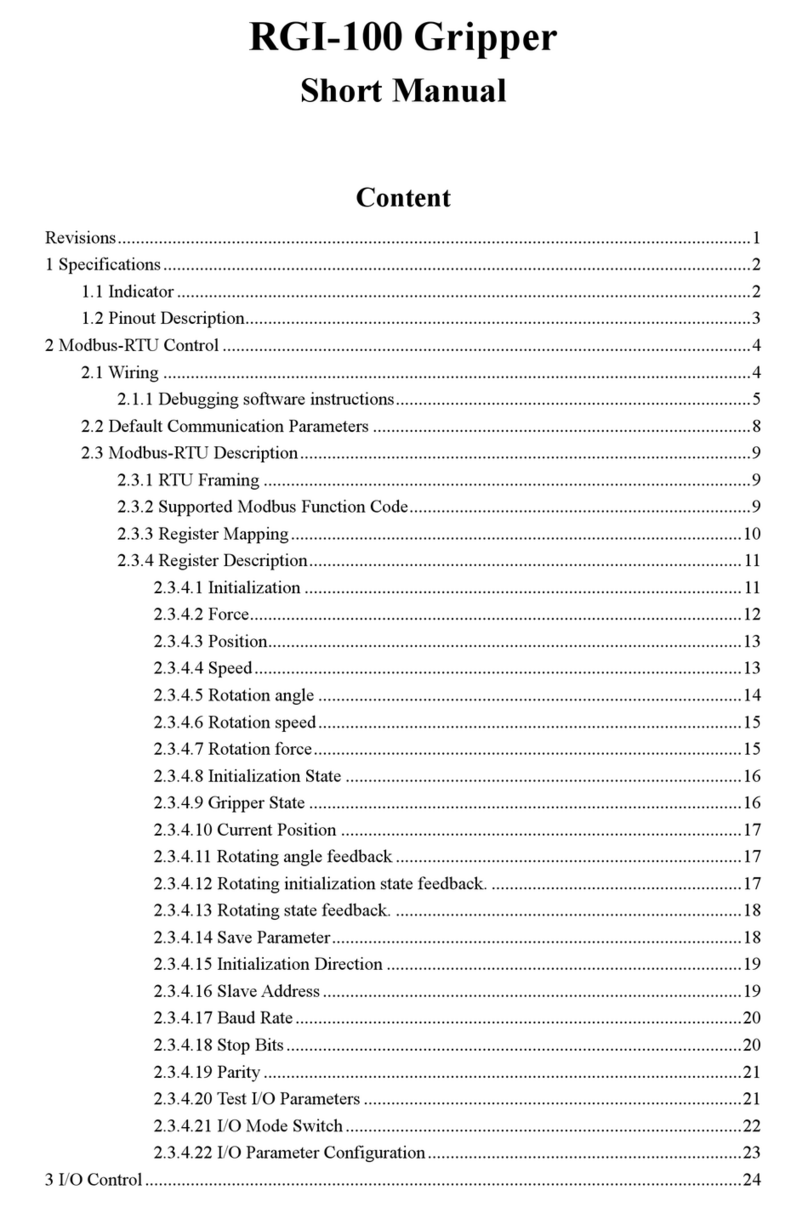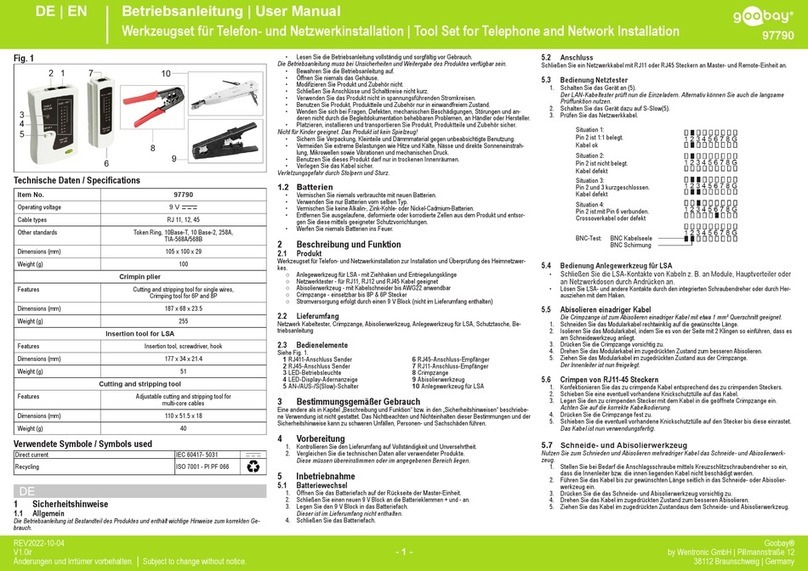
7
Übersetzung der Originalbetriebsanleitung
Bohrschablone (1) (Abb. C) lässt sich der erforderliche Abstand
zur Werstückkante festlegen.
Hinweis: Die Bohrschablone ist mit Führungslaschen zweier
Größen ausgestattet, die unterschiedliche Abstandseinstellungen
ermöglichen.
5. Bringen Sie die Bohrschablone in Position, so dass die
Führungslaschen bündig entlang der Werkstückkante (Abb. D)
liegen.
6. Spannen Sie die Bohrschablone mithilfe einer Werkstückzwinge
innerhalb des Spannbereichs (7) (Abb. D) fest.
7. Setzen Sie den Bohrer in die Bohrmaschine (nicht mitgeliefert)
ein und befestigen Sie ihn.
8. Führen Sie die Bohrerspitze in eine der Bohrführungen bis
diese das Werkstück berührt.
9. Schalten Sie die Bohrmaschine ein und führen Sie die
Bohrerspitze langsam in das Werkstück, bis der Tiefenanschlag
an der Bohrschablone anschlägt (Abb. D).
Hinweis: Bohren Sie bei hoher Drehzahl und halten Sie diese
Geschwindigkeit während des gesamten Bohrdurchgangs.
10. Entnehmen Sie den Bohrer aus der Bohrführung und schalten
Sie die Bohrmaschine aus.
11. Bohren Sie weitere Löcher mit den restlichen Bohrführungen.
12. Entfernen Sie die Klemmzwinge und positionieren Sie die
Bohrschablone erneut, um die Lochreihenfolge fortzusetzen.
13. Positionieren Sie die Bohrschablone, indem Sie den Fixierstift
(4) durch die letzte Bohrführung der Bohrschablone in das
letzte Loch der gerade gebohrten Lochreihe stecken (Abb. E).
14. Spannen Sie die Bohrschablone erneut fest und bohren Sie die
verbleibenden Löcher.
Hinweis: Wenn am Ende der Lochreihe nicht genügend Platz
vorhanden ist, um die Schablone der ganzen Länge nach
anzusetzen, dann verwenden Sie die entsprechende Bohrführung,
die es ermöglicht die Bohrschablone zu positionieren.
Hinweis: Die Bohrschablone kann auch ohne Führungslaschen
verwendet werden, allerdings muss dann eine alternative Methode
zum Ausrichten der Bohrschablone implementiert werden, um
exakte Abstände der Lochreihe gewährleisten zu können.
Zubehör
Ein umfassendes Zubehörsortiment einschließlich verschiedener
Bohrer, Fixierstifte und Tiefeneinstellringe ist über Ihren Triton-
Fachhändler erhältlich.
Wartung und Pflege
Halten Sie Ihre Bohrschablone in einem sauberen Zustand.
Vermeiden Sie, dass sich Sägemehl um die Bohrschablone herum
ansammelt. Reinigen Sie das Gerät regelmäßig mit einer weichen
Bürste, einem Staubsauger oder ggf. mit Druckluft und entfernen
Sie Harz mit einem geeigneten Lösungsmittel.
Kontakt
Informationen zu Reparatur- und Kundendiensten erhalten Sie unter
der Rufnummer (+44) 1935/382222.
Webseite: tritontools.com/de-DE/Support
Postanschrift:
Powerbox
Boundary Way
Lufton Trading Estate
Yeovil, Somerset
BA22 8HZ
Großbritannien
Einführung
Vielen Dank, dass Sie sich für dieses Triton-Werkzeug entschieden
haben. Diese Anleitung enthält wichtige Informationen für das
sichere und effektive Arbeiten mit diesem Produkt. Bitte lesen Sie
diese Anleitung sorgfältig durch, um den größtmöglichen Nutzen
aus dem einzigartigen Design dieses Produkts ziehen zu können.
Bewahren Sie diese Anleitung griffbereit auf und sorgen Sie dafür,
dass alle Benutzer dieses Geräts sie gelesen und verstanden haben.
Geräteübersicht
1. Bohrschablone
2. Bohrführung x 7
3. Bohrer
4. Fixierstift
5. Sechskantschlüssel
6. Tiefeneinstellring
7. Spannbereich
8. Verbindungseinkerbung
9. Verbindungsnase
Bestimmungsgmäße
Verwendung
Bohrschablone für optimale Anfertigung sauberer und exakter
Bohrlöcher für Regalböden in Regalen und Schränken.
Vor Inbetriebnahme
WARNUNG! Befolgen Sie stets die Sicherheitshinweise und die
Bedienungsanleitung des Elektrowerkzeugs, das in Verbindung mit
diesem Produkt verwendet wird.
Verwendung mehrerer Bohrschablonen
Dank des Einrastsystems lassen sich zwei oder mehrere
Bohrschablonen (1) miteinander verbinden, um eine durchgehende
Bohrvorrichtung zu erzeugen, die die gesamte zu bohrende Länge
abdeckt.
1. Richten Sie die zu verbindenden Bohrschablonenenden in einem
Winkel von 45° aufeinander aus.
2. Führen Sie die Bohrschablone in entgegengesetzten Richtungen,
um die Verbindungseinkerbungen (8) mit den Verbindungsnasen
(9) zusammenzufügen. Üben Sie genug Druck aus, um die Teile
einrasten zu lassen (Abb. A).
3. Verbinden Sie zusätzliche Bohrschablonen bei Bedarf.
Bedienung
WARNUNG! Halten Sie während des Bohrens die
Bohrschablone (1) NIEMALS mit der Hand fest; diese muss
unbedingt mit Hilfe einer geeigneten Spannvorrichtung an einer
Werkbank befestigt werden. Bei Nichtbeachtung können das
Werkzeug beschädigt und/oder schwere Verletzungen verursacht
werden.
1. Zum Einstellen der Bohrtiefe setzen Sie den Bohrer (3) in eine
der Bohrführungen (2) und richten ihn mit der Werkstückkante
aus (Abb. II).
2. Schieben Sie den Tiefeneinstellring (6) in der gewünschten
Bohrtiefe auf den Bohrer auf (Abb. B).
3. Ziehen Sie die Madenschraube am Tiefeneinstellring mithilfe
des Sechskantschlüssels (5) fest (Abb. B).
4. Mit den ausklappbaren Führungslaschen an der Unterseite der
303468_Manual.indd 7 27/02/2019 15:31
